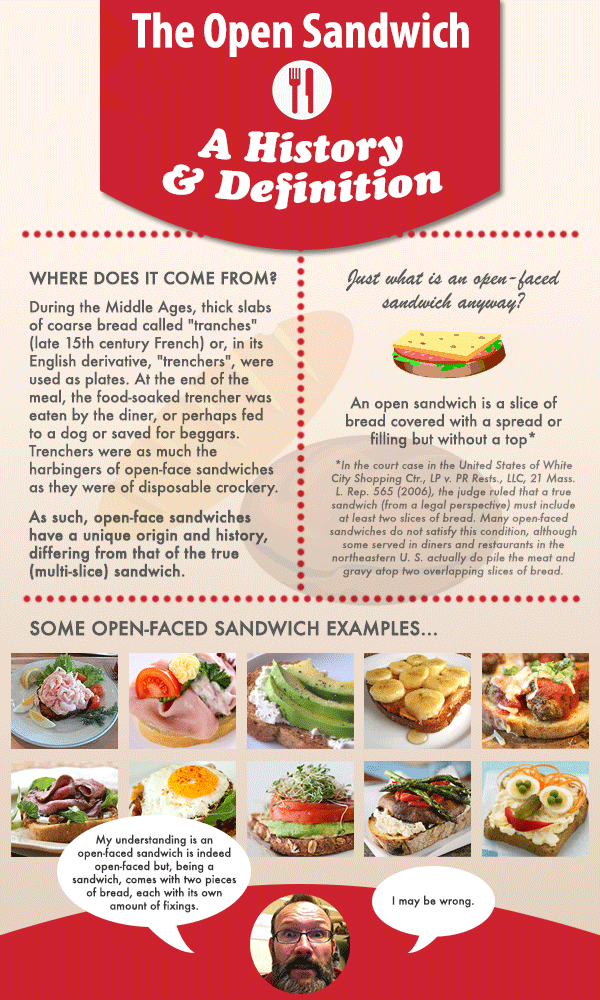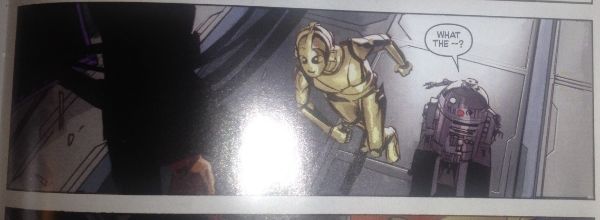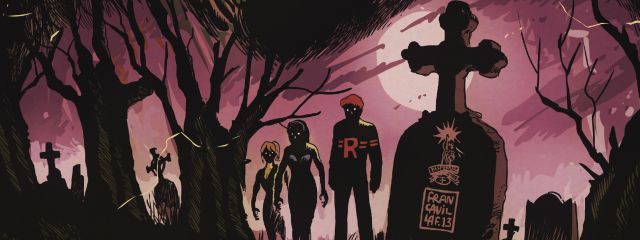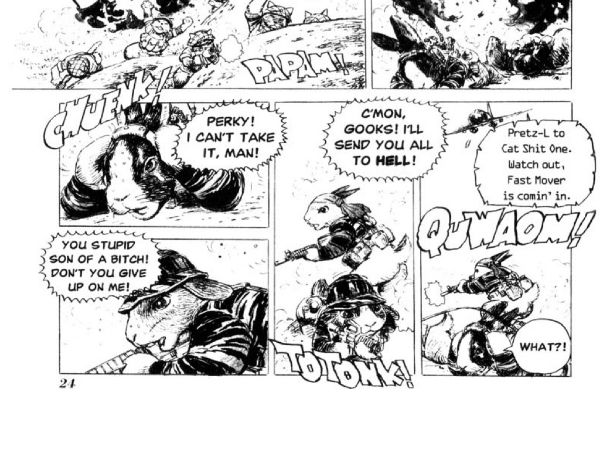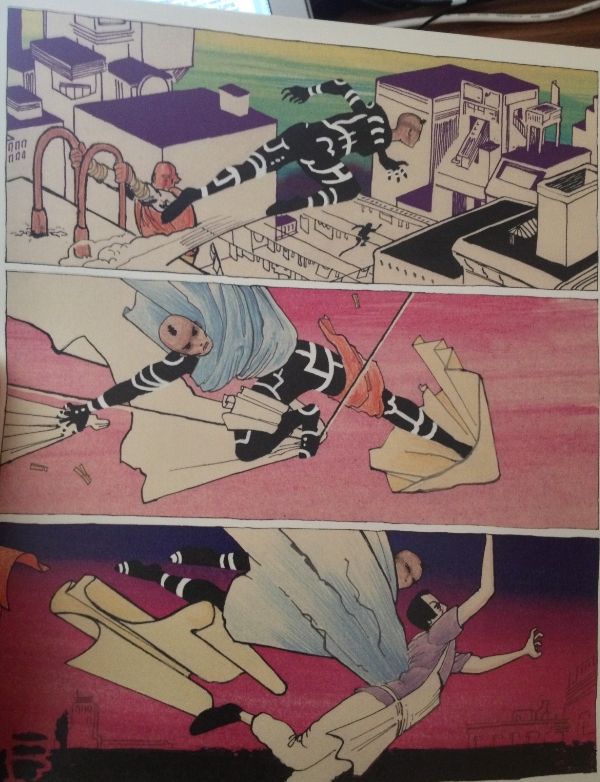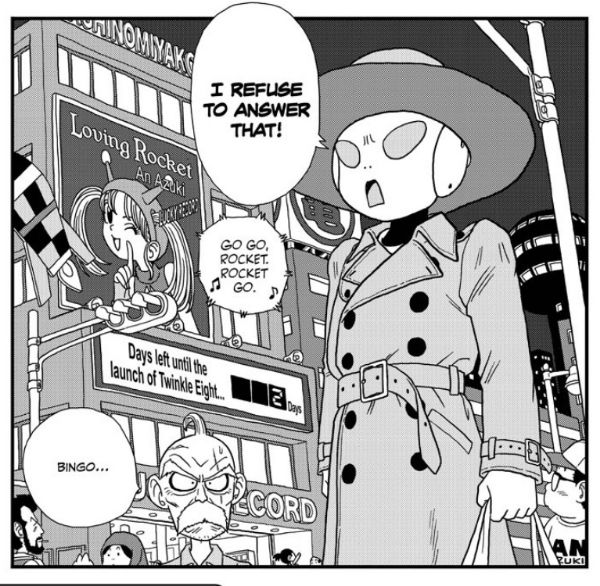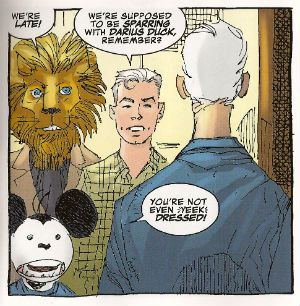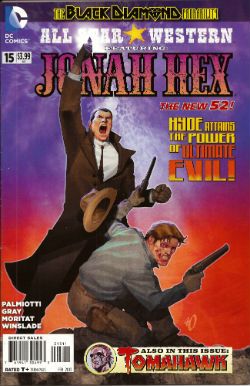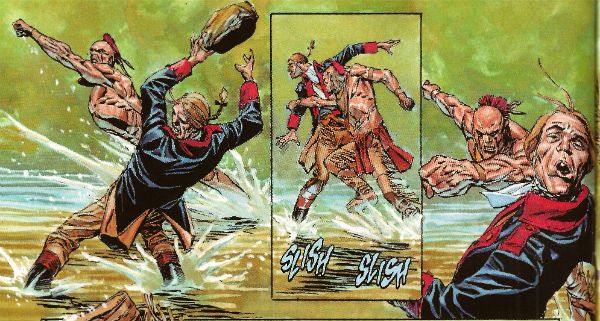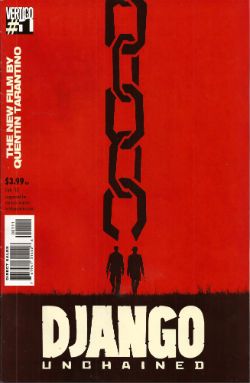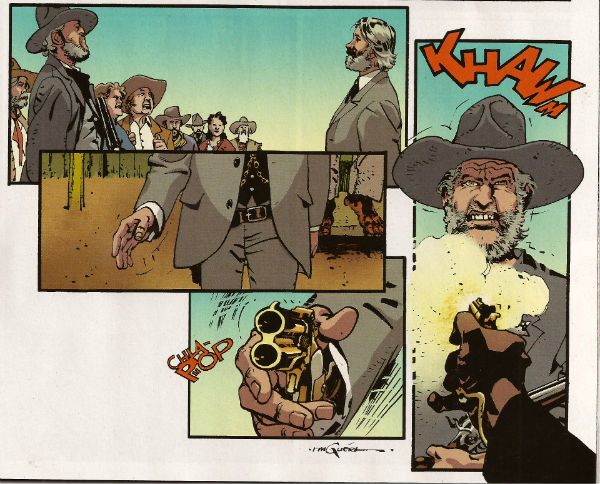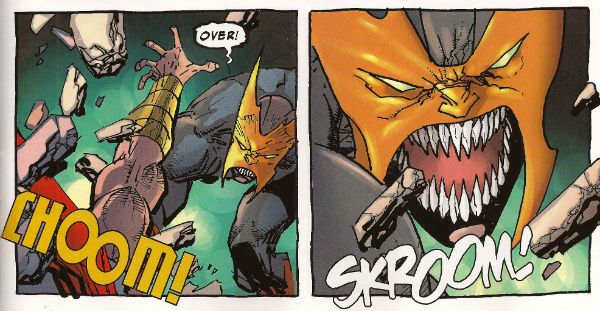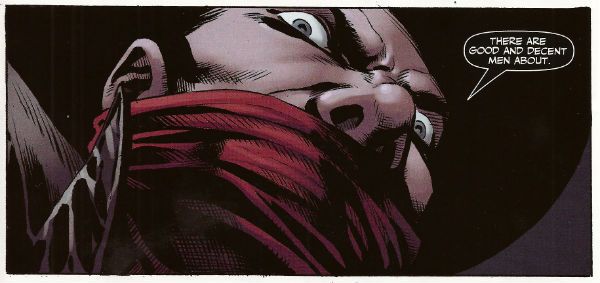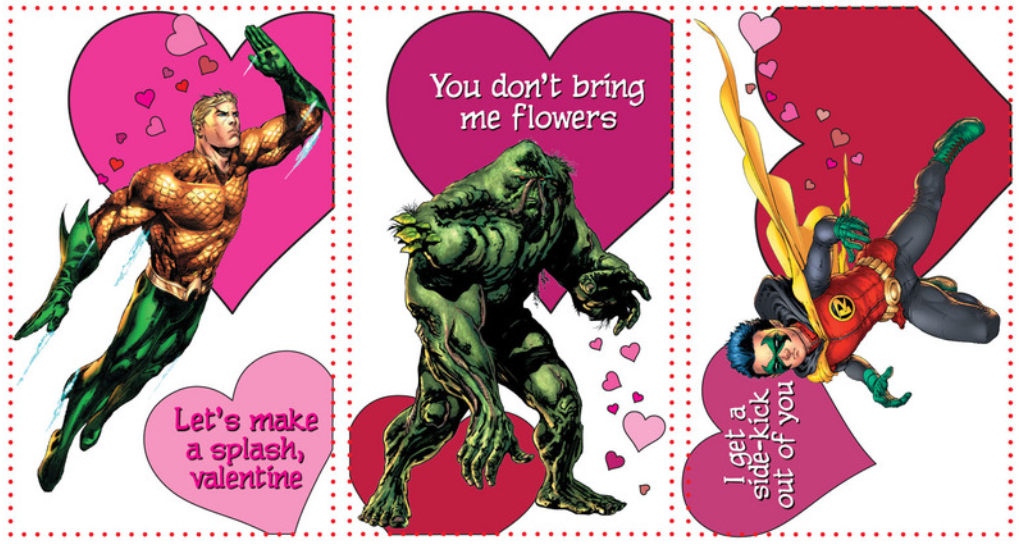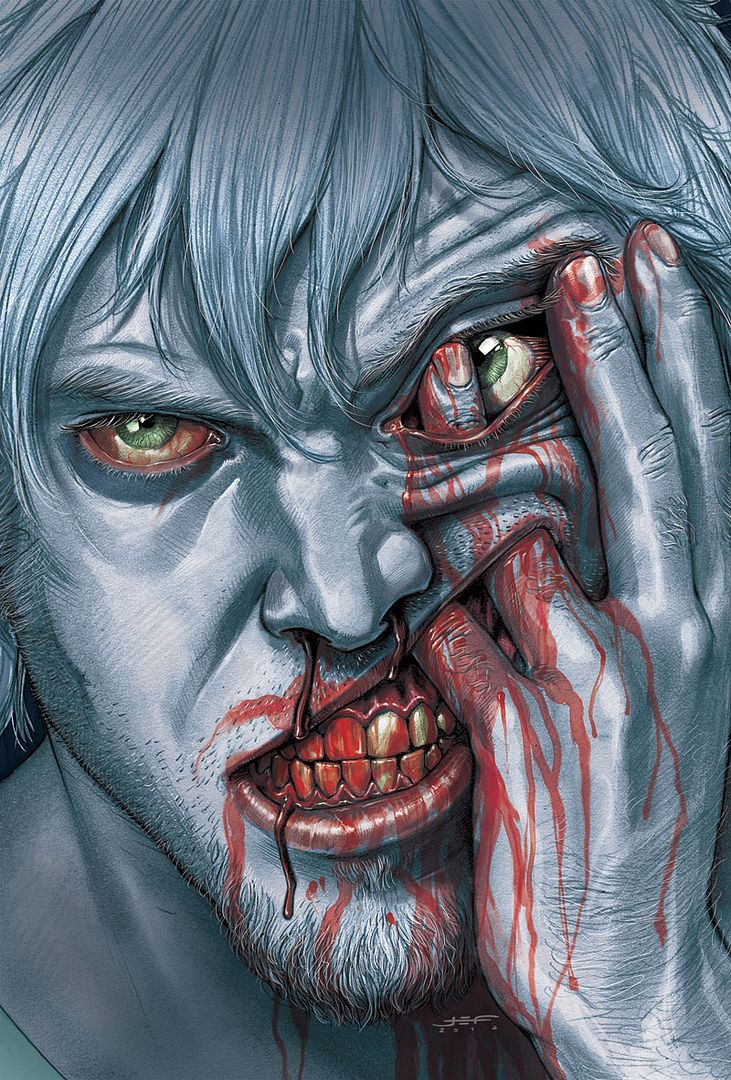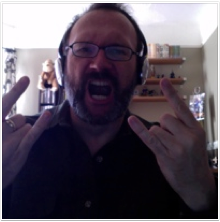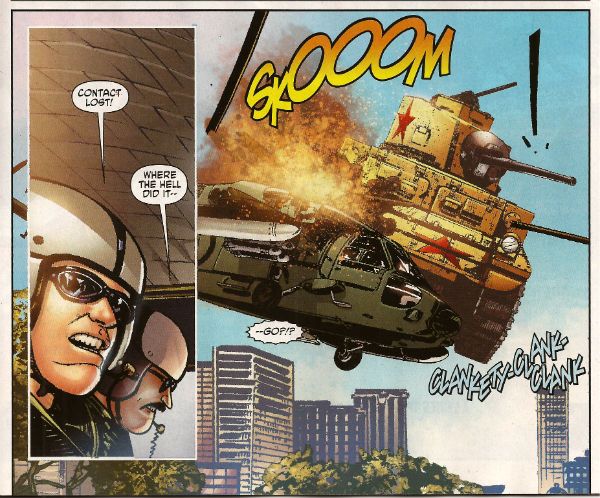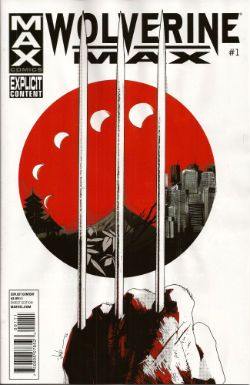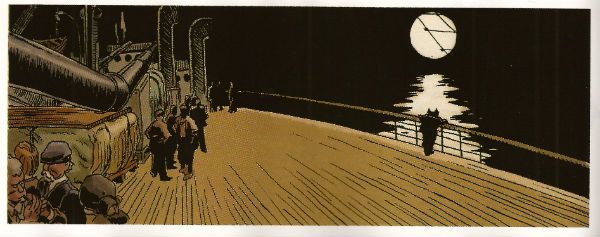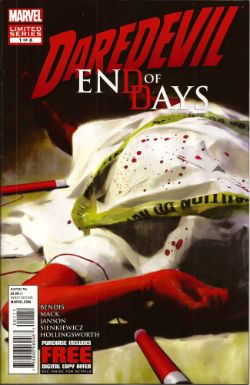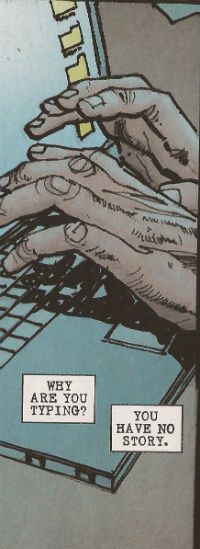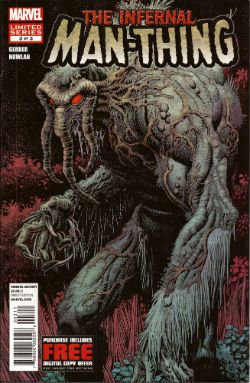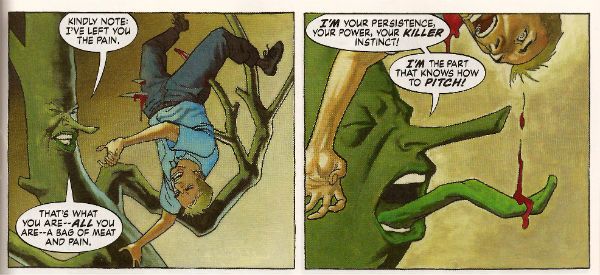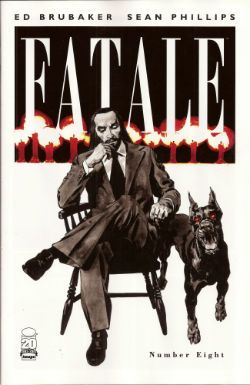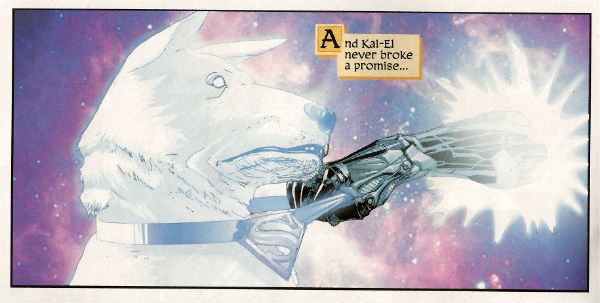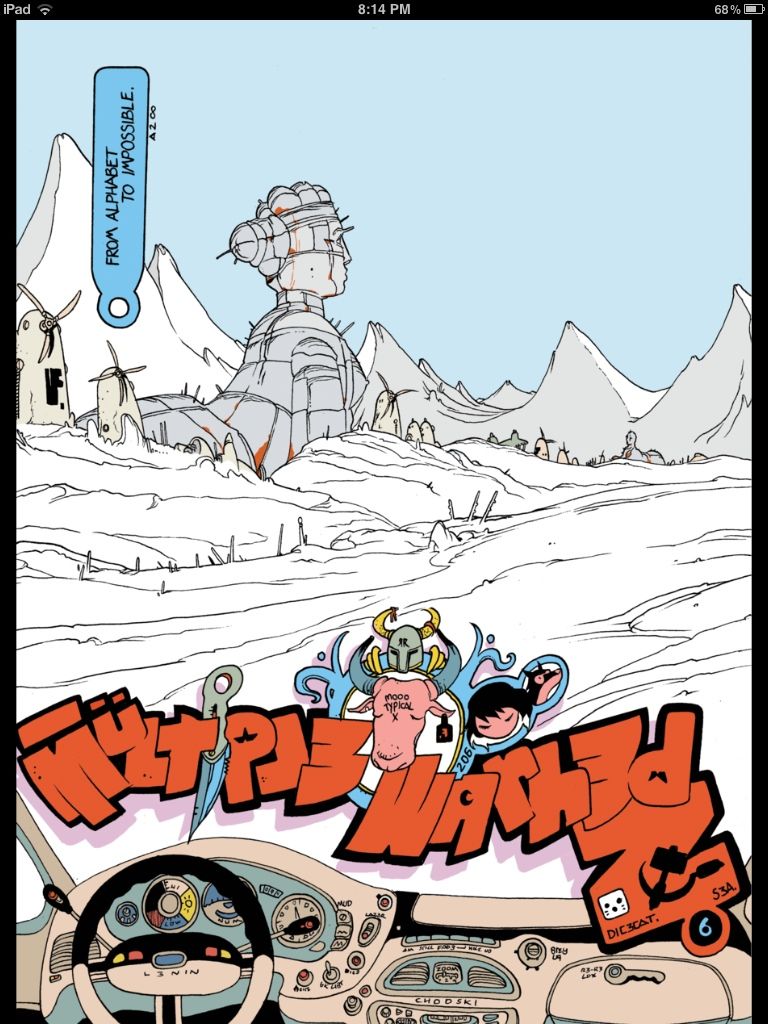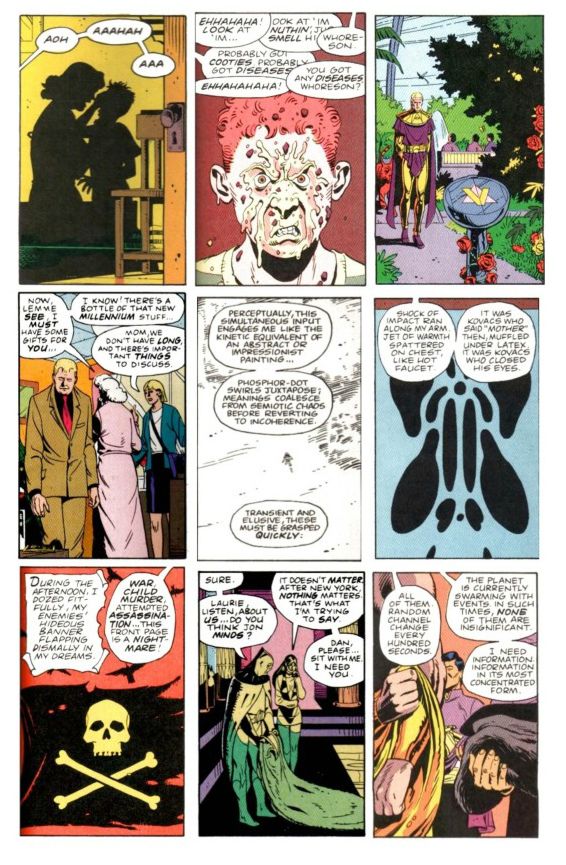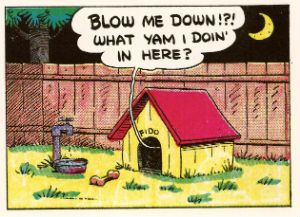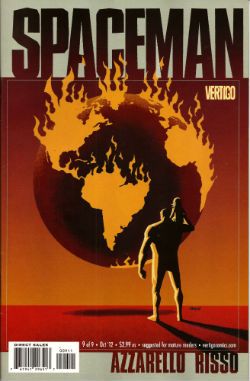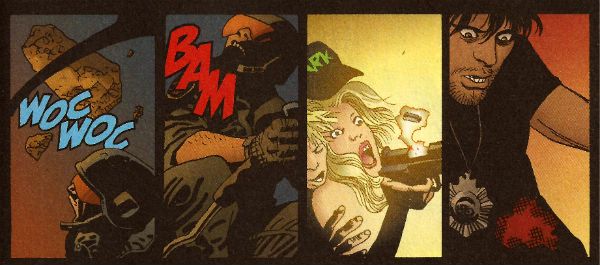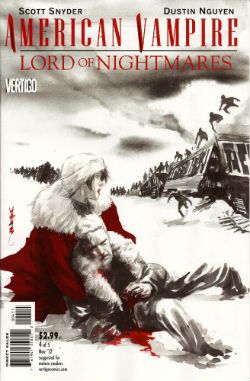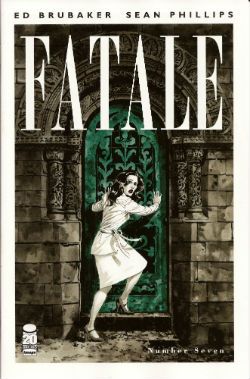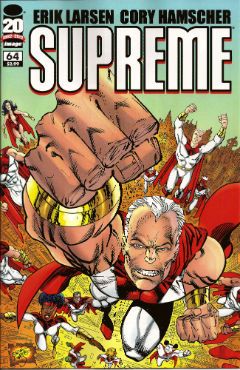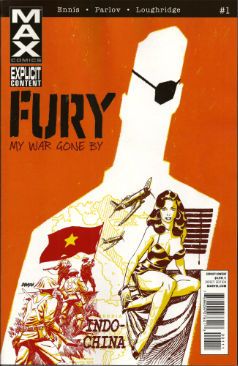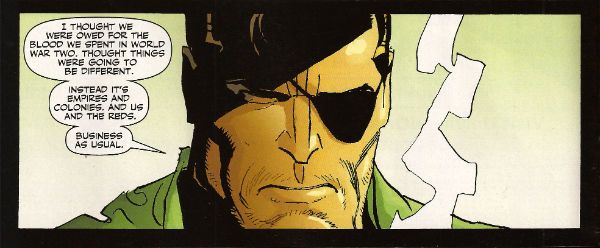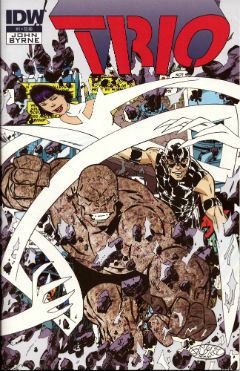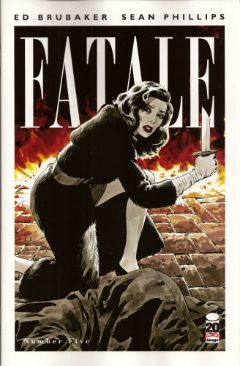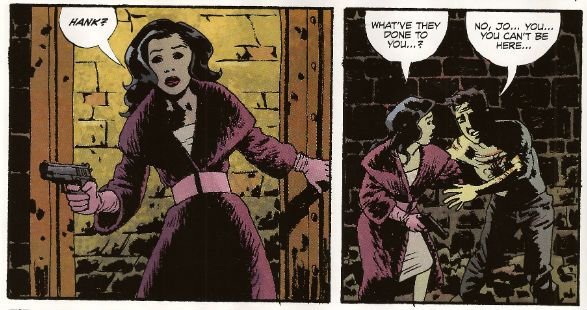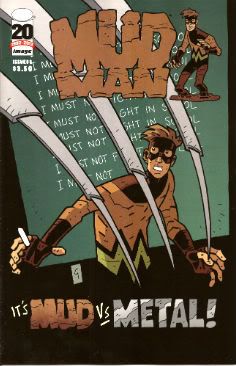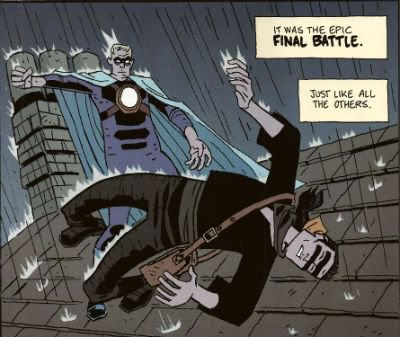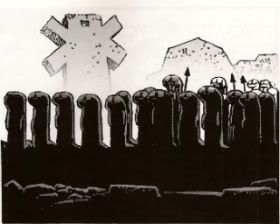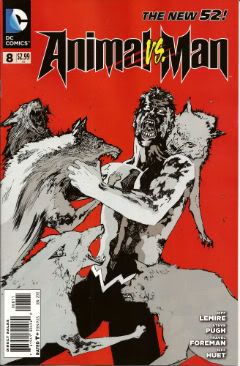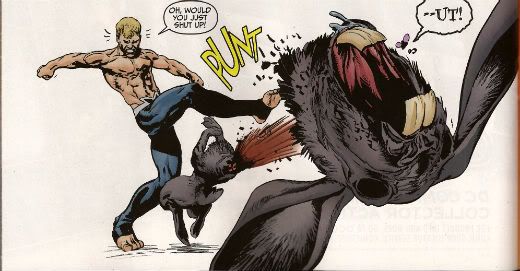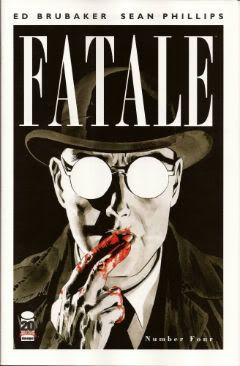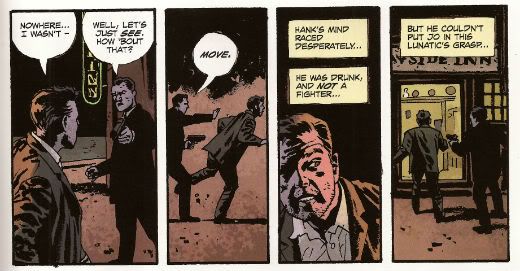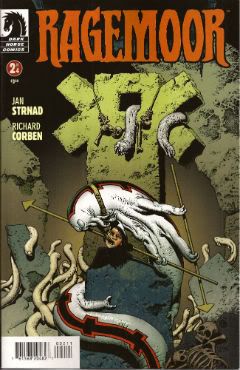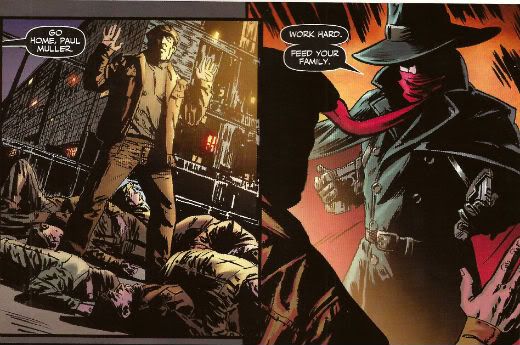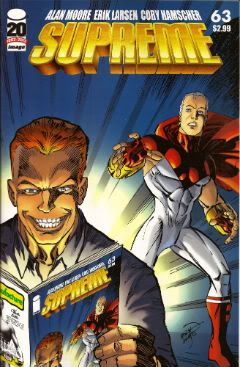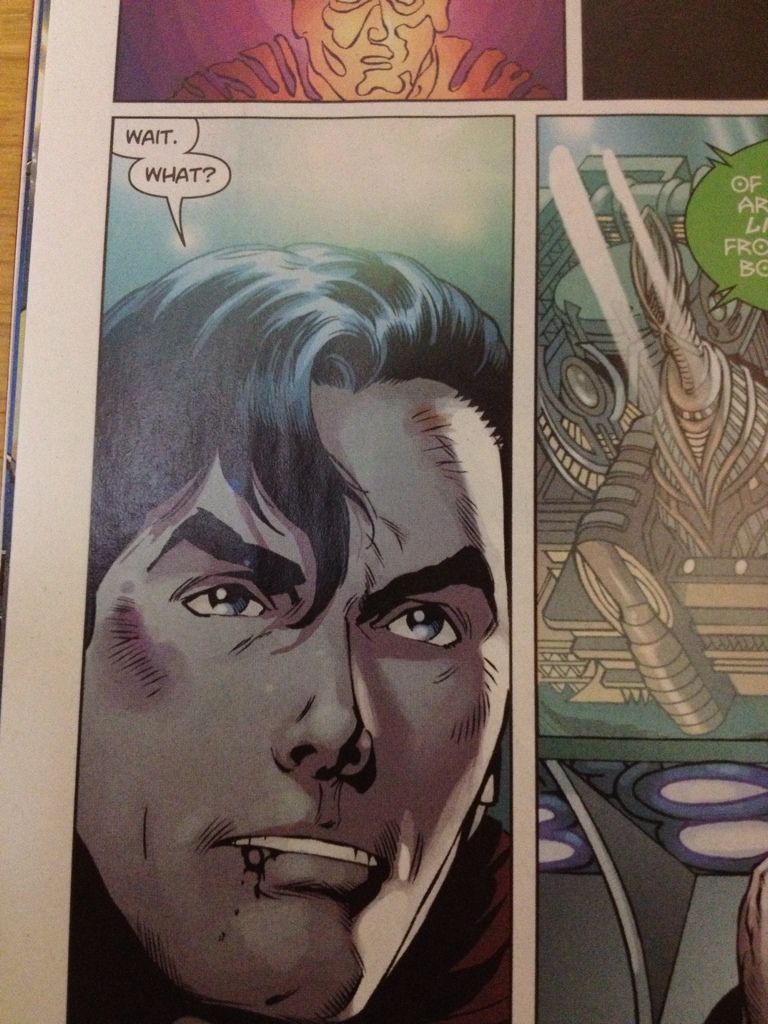Hello. So, I started really reading comics again, new ones. Except for that
Joost Swarte book (which is really terrific, by the way), I feel like I'd mostly focused on old ones for a sizable chunk of this year, revisiting books that made me happy. That seemed like the healthiest way of dealing with the Comics News this year. I was in a "
none of those people get my money; my precious, precious money; me gold, give me back me gold" mood. I call my new fashionz the
Executive Leprechaun.
Anyways, that mood passed, so I've been looking for stuff to read-- wound up buying a lot of the new Image books that have been coming out, for good or for ill. I still don't have enough time or thoughts or interest enough for the kind of writing I like to do, for my Super Deep Thoughts (TM). But I noticed lately when I've been talking about movies, when I have a lot I want to get out about a movie, that I've had a good time just rattling off ten things that I think, and then just getting on with my life (which is just too spectacular).
So I thought I could try to do that with some of these Image books...? Maybe it'll work; maybe it won't; this one turned out pretty boring, but. And maybe this'll be the only one I do-- maybe I get hit by a meteor tomorrow. So.... So, yeah. (Sorry I haven't done this in a while-- how do you start one of these again???). So... so...
FATALE, issue #1 to issue #5, created by Ed Brubaker, Sean Phillips and Dave Stewart, published by Image Comics, copyright the Basement Gang, Inc.

1. The "high concept" of FATALE is taking the "doomed woman that men are helpless to resist and are ultimately destroyed by" figure from noir, and placing that character into a monster-comic where her effect on men can be made explicitly supernatural, and her doomed quality is as a result of being chased by demonic men with octopus heads. Five issues have been published so far, comprising the first storyline entitled "Death Chases Me." Except for framing sequences set in what I'm guessing is the modern day (?), the storyline for "Death Chases Me" mostly takes place in late-1950's San Francisco. But it's fuzzy what (if any) connections the comic is trying to draw between any of its themes and its choice of place or period. After WWII, a lot of veterans stayed in San Francisco, I suppose; sure enough, the comic has suggested the titular femme fatale has some connection with that war-- some fuzzy dimestore "the Nazis liked the occult" plot lurking in the background, the kind it's hard not to feel that Mignola and his BPRD crew owns. Fuzzy this; fuzzy that. It's a fuzzy comic: strong on mood but all of the details so far seem just off-panel. Characters are referred to as "corrupt cops" but we don't see much (if anything) by way of specific corrupt behavior. The stakes are fuzzy-- the engine for the first plotline is varous characters are hunting for ... something that presumably means ... something, possibly for reasons. The main character met the femme fatale... sometime, in connection with his investigation of ... some such. Can anyone explain the plotline involving the mobster? Who the hell was "Leroy Kessler"?? What did I have for lunch yesterday? Where are my keys? Not knowing where my keys are is what makes me not being able to find my keys a horror story.
2. For moods, for textures, the comic succeeds-- if how a story is told is as important as what it's about for you, there may be pleasure here in FATALE's suffocating panel grids, shadow-drenched faces, red hooded cultists lurking through rain soaked San Francisco. The "corrupt cop" narrating that the Octopus Monster's suicide-squad henchmen wouldn't start shit in Chinatown may not make a lick of fucking sense upon close examination, the fuck is he talking about, but if the end result is sunglass-wearing henchmen of an Octopus Man squaring off against a guy in a trenchcoat in a Chinatown opium den, then I'm not killjoy enough to complain. The next storyline supposedly takes place in 70's Los Angeles, apparently intent on replacing the book's post-war disillusionment with post-Manson post-hippie (maybe post-Watergate depending where we are in the 70's) disillusionment; hearing about that sold me on the comic more than anything else had-- wanting to spend time in that world, that particular Los Angeles. As a consumer of popular entertainment, I'm very much an involuntary sucker for certain images: if a story has a con man in it, or mismatched cops teaming up, or Amy Adams trying to bake a souffle, I'm ten times more likely to enjoy it. For my list of images, FATALE ticks enough of those boxes where I come out favorably towards it, and I have to admit I'm perpetually that simple-minded, that shallow. So, did I enjoy FATALE? Sure; more horror in the horror parts would be nice-- the British wave of writers would've had some more grotesque shit happen by issue 5 than gentle, classy hints that a woman died badly (which is as dark as the "horror" parts of this comic ever gets); but overall, sure. Could I explain to you what happened? Oh heavens, no-- heavens to murgatroyd, no, not at all. But did I enjoy it? Enjoyed it enough, spending time in that word; no regrets.

3.
Femme fatales, huh? Figure those as, what, fear of sex; alienation from women; fear of a man's loss of sexual control made flesh. So, question... are those themes well served by a man being helpless to a sexually dominant woman due to supernatural reasons rather than lust, obsession, emptiness, need, desparation? On the one hand, presenting the
femme fatale as a supernatural figure seems historically to be a common enough trope in your world literature. There's the succubus. Sirens, who'd lead men to their doom. Angelina Jolie circa her marriage with Billy Bob Thornton when she used to carry a vial of his blood around in a necklace-- that probably counts; that was pretty goth. Uhh, and I guess I overheard that there's a Cinemax show on right now called
FEMME FATALES which is sort of about a supernatural
femme fatale, and also tits, girl-tits;
Highest Possible Recommendation (uh, from the person I overheard)
. On the other hand.... while FATALE nods to human weakness certainly, in page after page of narration ("
The way he felt about Josephine... It was out of balance with the world"), if the male characters's agency is being controlled by magical forces rather than human weakness... isn't human weakness let off the hook? And isn't the audience thus let off the hook? How long can a noir story or a horror story sustain itself if it lets human weakness off the hook?
4. One thing that I don't have the math figured on with FATALE in my head: the main character of the framing sequences (set long after the action of the San Francisco storyline has gone down) has a white streak going through his hair, such that he very much resembles the character Jason Blood from Jack Kirby's THE DEMON. (Granted-- finding ways of making boring old Normal People look comic-book interesting is a tough business; I could compare whatshisname to Rogue of the X-Men comics but all I really remember about her is that she said "sugah" a lot and I was disappointed she didn't have sexy time with Magneto in that Jim Lee Savage Land run; see also, how many people with eye patches do you meet on a day to day level?). Still. The rest of the comic, it's not hard to read as a duck press of EC comics: dead women, weird cults, mobsters, monsters; that three-tier grid-- is that a thing you link in your head with EC? So, if we hold it up and look at FATALE as a EC comic with Jason Blood in the framing sequences instead of the Crypt Keeper or whoever, that means...? Maybe for some part of the audience, having a Kirby character learn his blood-soaked past has some frission to it. But if FATALE is a story about comics as much as it's a story about anything (and it's still too early and all too fuzzy to say whether that's so), I don't think that's how I prefer to interface with it because... Because I know my nature, and I'm inclined to be less generous reading it that way (e.g., on account of thinking that comic creators have taken way more than their fare share from Kirby already, maybe Brubaker and/or the people he typically works for specifically). (But I had a hard time with that Action Comics Obama issue that people got all hepped up about, too-- I'm just becoming worse at reading that kind of thing anymore; I'm a cranky guy).
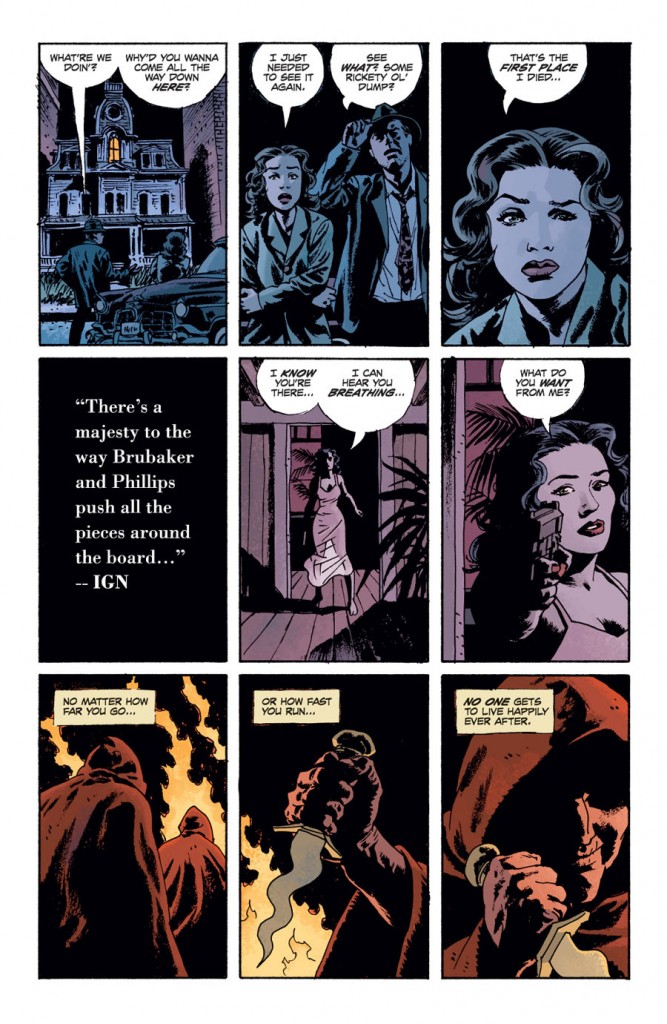
5. Apparently, the book is a great big hit though, a blockbuster hit comic, or at least the copy of the first issue I wound up with is marked "
Fifth Printing." I figure you don't get to five printings without printings One through Cuatro being received well, though no one really ever says what the numbers involved are-- it seems like there's a part of the game especially with "independent comics" where the big-wigs like the hanky-panky with how many copies get printed so they can announce "sell-outs" and what have you, for that dim part of the audience that openly conflates sales success with creative success, the Jay Leno fans (I'm not sure what I'll call them after Jay inevitably rides on the
Most Classic Car There Is, but I'm open to suggestions). That third printing could have been 5 copies that were dumped into a tub of nuclear waste and will spend the rest of the eternity somewhere underneath an elementary school playground in New Mexico. Eric Stephenson could be standing at a train station, whittling a piece of straw in his mouth, saying "
We gots you, boy-- by the time you know better, we'll be in Tuscaloosa. Hee-haw!" 100% of that could have happened-- Eric Stephenson could be a Secret Carney. We don't know, nobody knows-- it's none of our business. But figure it as a success, so: anything interesting about that? Any great lessons there? I don't see that a story about 1950's era
femme fatales is especially
Right Now, so I don't know that I'd chalk this one up to the good ol' zeitgeist. So...? It'd be nice if it meant there was a segment of the comics audience still standing that yearns for something that appears novelistic-- that those people hadn't been driven away completely like some have speculated, that the desire for comics that seem to have some scope hasn't been quashed completely. That'd be a nice thing. It'd be interesting if it meant that people who've heard good things about CRIMINAL over the years, when presented with a jumping-on point of a new series, perceived FATALE as a jumping-on point in a way that they didn't see the fourth or fifth CRIMINAL miniseries, regardless of how independent those are of each other, combined with some novelty that they didn't perceive in the superheroics of INCOGNITO. That'd be interesting. Maybe people are just really, really psyched by WINTER SOLDIER and wanted more from the guy who makes WINTER SOLDIER, though. That'd be fine. You kinda see the
femme fatale's shadow-boobs in the first and second issues. Maybe the shadow-boob fetishists found out about FATALE and it's the toast of Shadow-Boob forums. That... well, that wouldn't be my #1 preference, but a sale's a sale. (You don't see her nipples incidentally-- as crime-horror comics go, it's PG-13 conservative, but... I can't say I have a strong opinion on whether that's classy big-tent good times or sad self-censor-y
oh-well-there-are-people-who-live-near-Bibles sad-y sad. It's noticeable, but I don't care, especially).
6. Highpoint of the series so far? I'd say it's Stephen Blackmoore's essay on Raymond Chandler and Clifton's Cafeteria in the back matter of issue #4-- I really dig Chandler, and LA crime, so that all sent me. Of the comic itself? I'd say again, issue #4, the two-page stretch where the "corrupt cop" talks about his life-long awareness of the supernatural horror pervading his world, and how "it wore him down, knowing how small he was... how insignificant he was to the things in the shadows..." That seemd to me the point where the books' attempts to intersect horror and crime most succeeded-- the character of the detective who stared into the abyss too long, only transformed not by the emptiness of the abyss but by things in the abyss looking back at him. If I had to pick a point where I felt like the book most succeeded at what it seemed like it had set out to do, that one. Issue #4 was a good one overall-- though "Death Chases Me" suffers from maybe that same deficency as that very first CRIMINAL arc, where it seems to promise more in the penultimate issue, such that the conclusion in issue #5, the action movie of shoot-outs and octopus men and redemptive violence, disappoints.
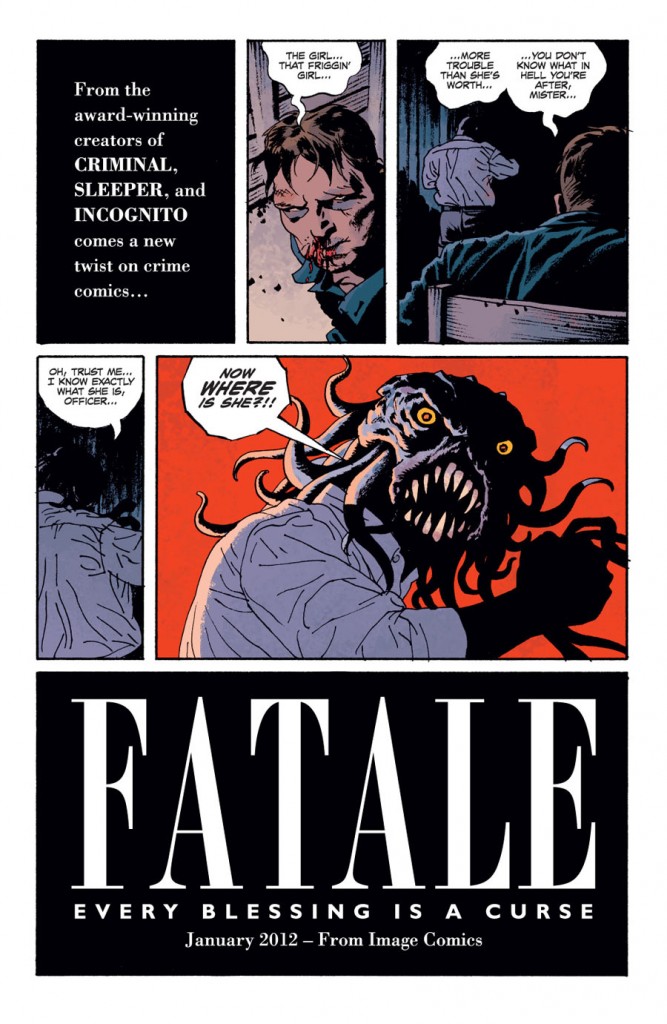
7. Lowpoint? I didn't really dig on that stretch in issue #3 where the
femme fatale character insists that the main character join her on an excursion to avenge her abusive past-- in this case, tawdry hints-at-rape imagery being conflated with a "cult ritual." Rape vengeance just isn't my bag, to begin with, as exploitation fare goes-- oh, I liked
REVENGE OF THE CHEERLEADERS, but from what I remember, the cheerleaders weren't avenging rape in that movie, so much as an attempted
coup-de-cheerleader from a sex-hating cabal comprised of, inter alia, an evil principal, a sinister nurse and local industrialists, which isn't really the same thing. "
The femme fatale who knows the dark side of sex because she's been made separate from the rest of society by her victimization"-- there's something gross about that idea that ... that I get the math on but that I can't shake a queasiness towards. I don't know that it'd be a tune I'd want to hear if I were a victim of anything too nasty, myself, you know? Plus, I couldn't make heads or tails out of what motivated that sequence. What was the
femme fatale after? Why had she waited that long to abuse her past? Why had she insisted on bringing the main character with her? Can you show a main character shrugging that sequence off without the audience holding his stupidity in contempt thereafter, regardless of supernatural explanations for his stupidity? How did that... why did that...
8. The first issue had a splash page. FATALE for the most part clings to a rigid three-tier grid, somewhere between five to nine panels per page. Mostly seven panels-- on a three tier grid, seven sure seems to come up a lot, maybe just by the math of it, all the different ways to add to seven (3*2*2, 3-3-1, 4-2-1, 5-1-1, and all the permutations thereof). But the first issue has a flashback sequence (for the above-referenced dime-store Nazi plot) that it drops a splash page. I only have a couple issues of LAST OF THE INNOCENT in arm's reach, and couldn't find a splash in either of those. SLEEPER I remember having a very particular page layout scheme. Did they splash a lot in CRIMINAL before? Did they splash a lot in INCOGNITO? I don't remember; the INCOGNITO pages online that come up on a google image search suggest they played faster, looser with the grid, as you might expect, but I don't have a photographic memory for splashes, alas. Doesn't seem too common from them-- but is that what you want from that team? Visual bombast...? I guess I don't think of Brubaker or Phillips as excitement guys-- with Brubaker, what I find interesting is his career-long fascination with regret, how often he returns to that as a theme; the times he's written action spectacles have never really involved me very much. Phillips, I like for mood, more more than explosions-- he's more Toth, than Steranko. FATALE's not really an exciting comic to me-- but that's what I like about it, and when it tries to become "exciting" in the fifth issue, that's where I checked out.

9. Colors from Dave Stewart, replacing Val Staples. Stewart goes heavy on the purple. I haven't spent enough time in San Francisco to say-- lot of purple going on in that city come nighttime? I was too distracted by your beautiful city's copious drug addicts, San Francisco, to note the color palettes on display. (Purple's historically been the color of evil in comics; so, there's that.) Compared to the Staples-era, the colors are less saturated, way cooler in temperature, less interested in making the reader overly aware of the pecularitiy of lighting. What's interesting is how Phillips's art seems different from the LAST OF THE INNOCENT issues I have in arm's reach; a side-by-side comparison of the two comics is striking-- I suggest it if you have the issues handy, to see the difference colorists can make to the same artist.
10. It'd be nice to be knowledgeable enough to say whether FATALE represents a culmination of any kind of techniques or thematic considerations that have been building from the first CRIMINAL or SLEEPER before it, but I don't think that I'm clever like that. I read the CRIMINAL(s); read SLEEPER though didn't really care for it the way the entire rest of the internet seemed to; seen my share of Brubaker and/or Phillips in other contexts. FATALE feels more ambitious, in stretching out its story over multiple decades; but what's new about it for them besides that, I couldn't answer. But that's no small appeal-- that was the draw for me, more than the genre mish-mashing, just badly wanting a comic that reached for a bigger canvas rather just settle for immediate pulp pleasures. I don't yet know if that's what I've got-- what we'll have if mysteries are revealed, solutions are given; whether there'll be anything left of interest if what's been left fuzzy is eventually brought into focus.
(You can find Fatale on our digital store here)
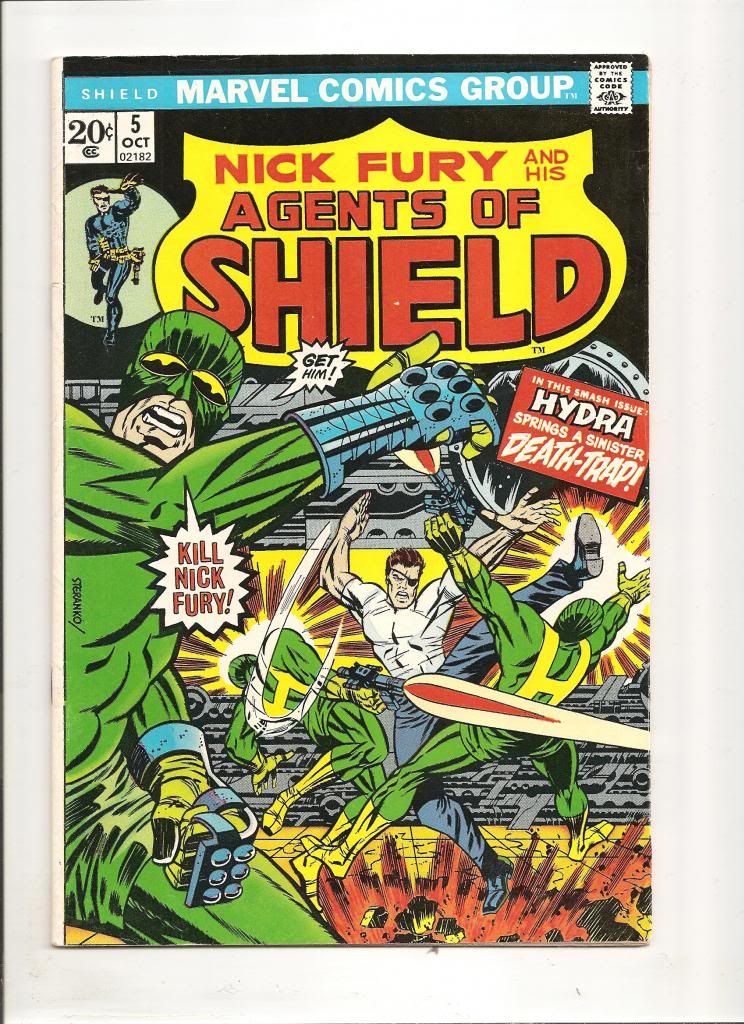 Ahh, nostalgia. I used to love that cover....and I know I should crop out that border. But.
Ahh, nostalgia. I used to love that cover....and I know I should crop out that border. But.

